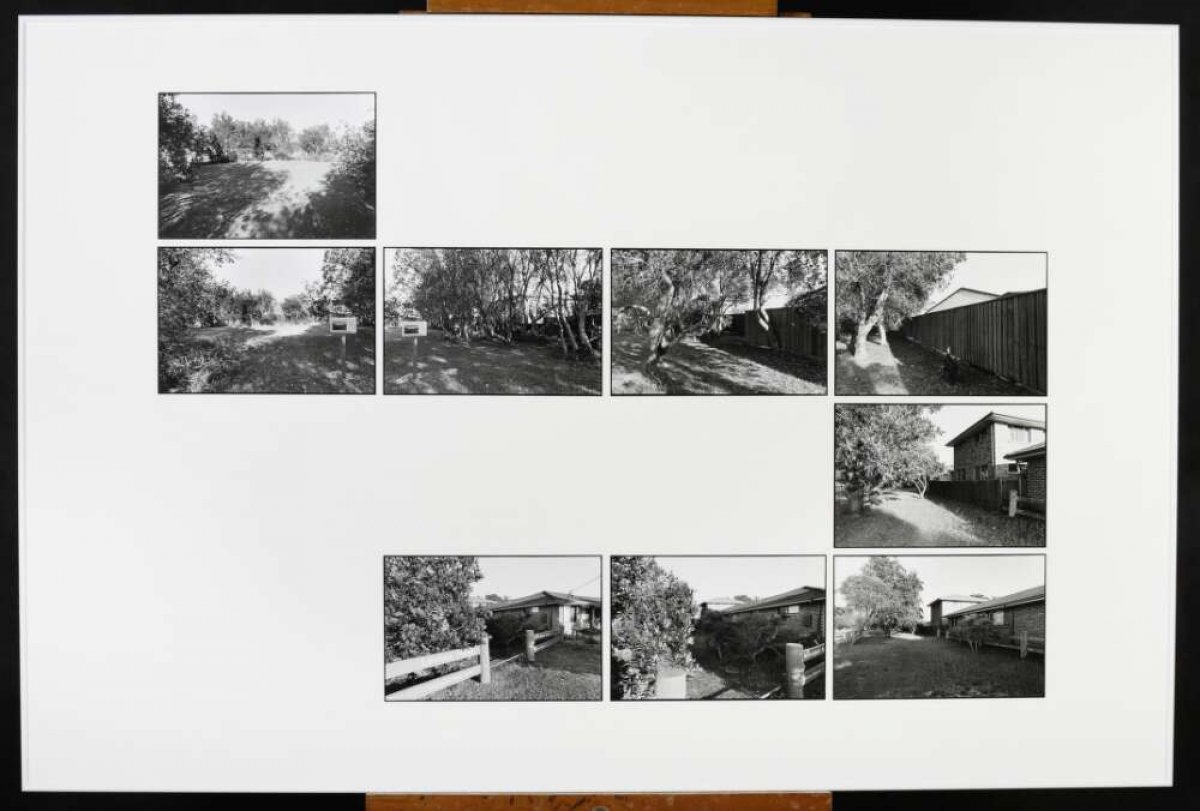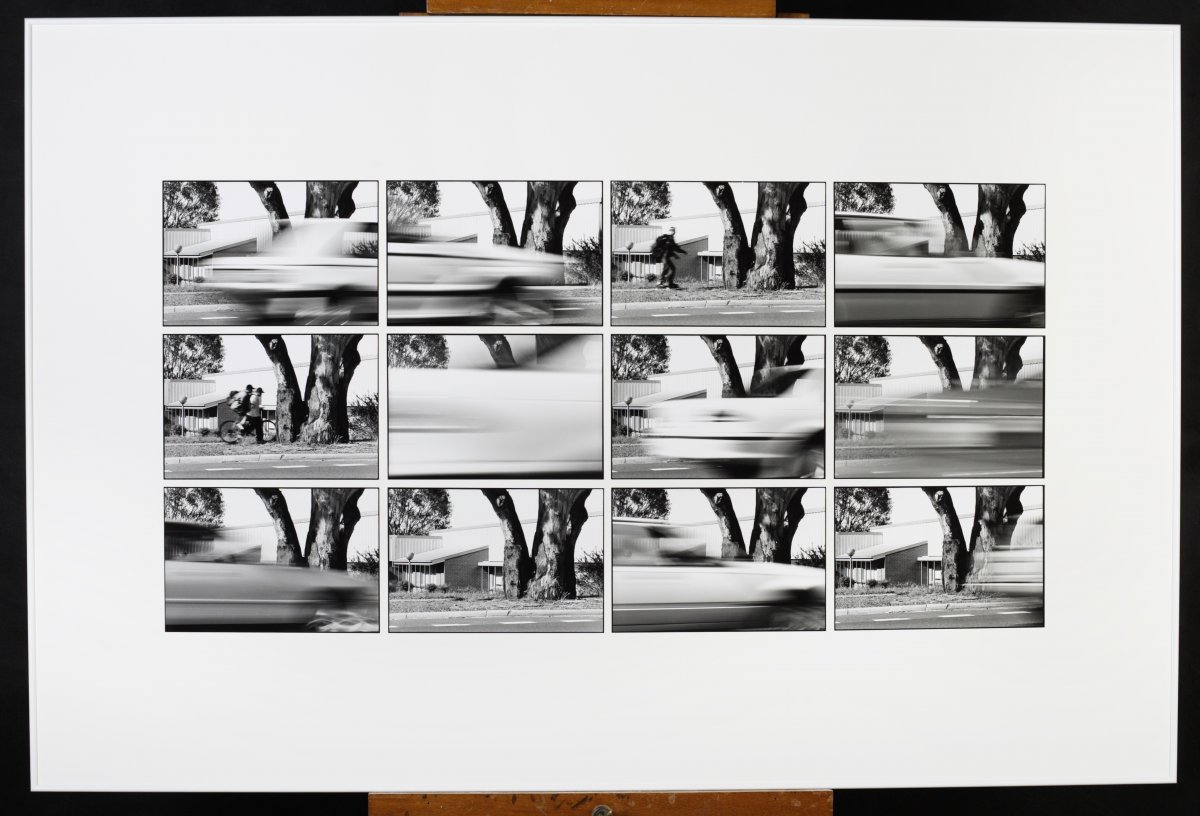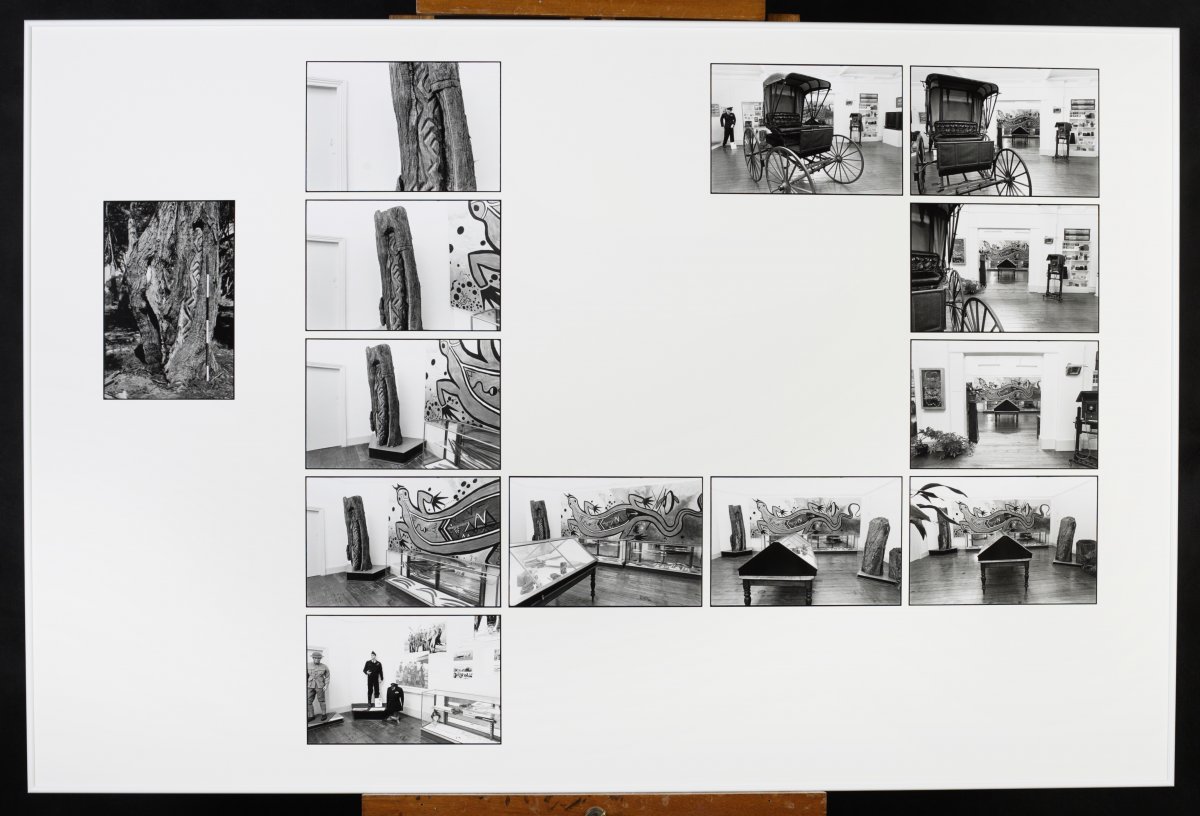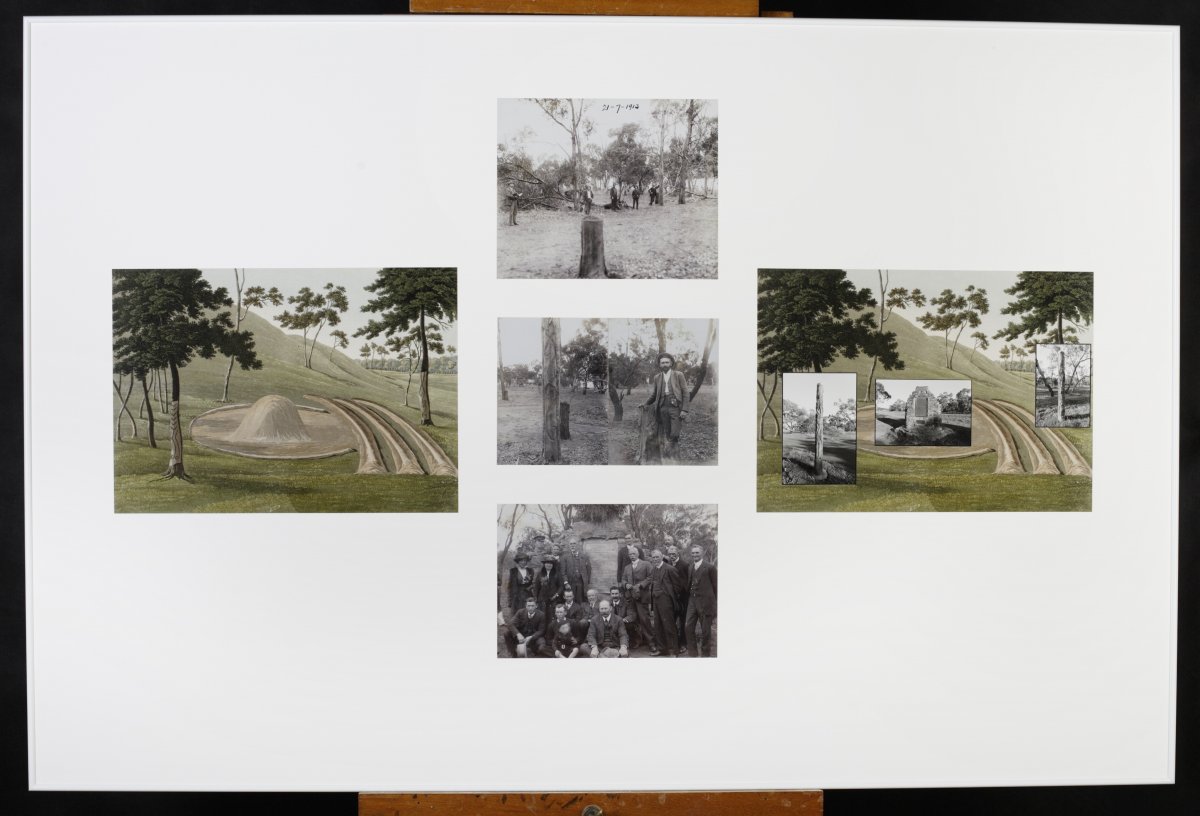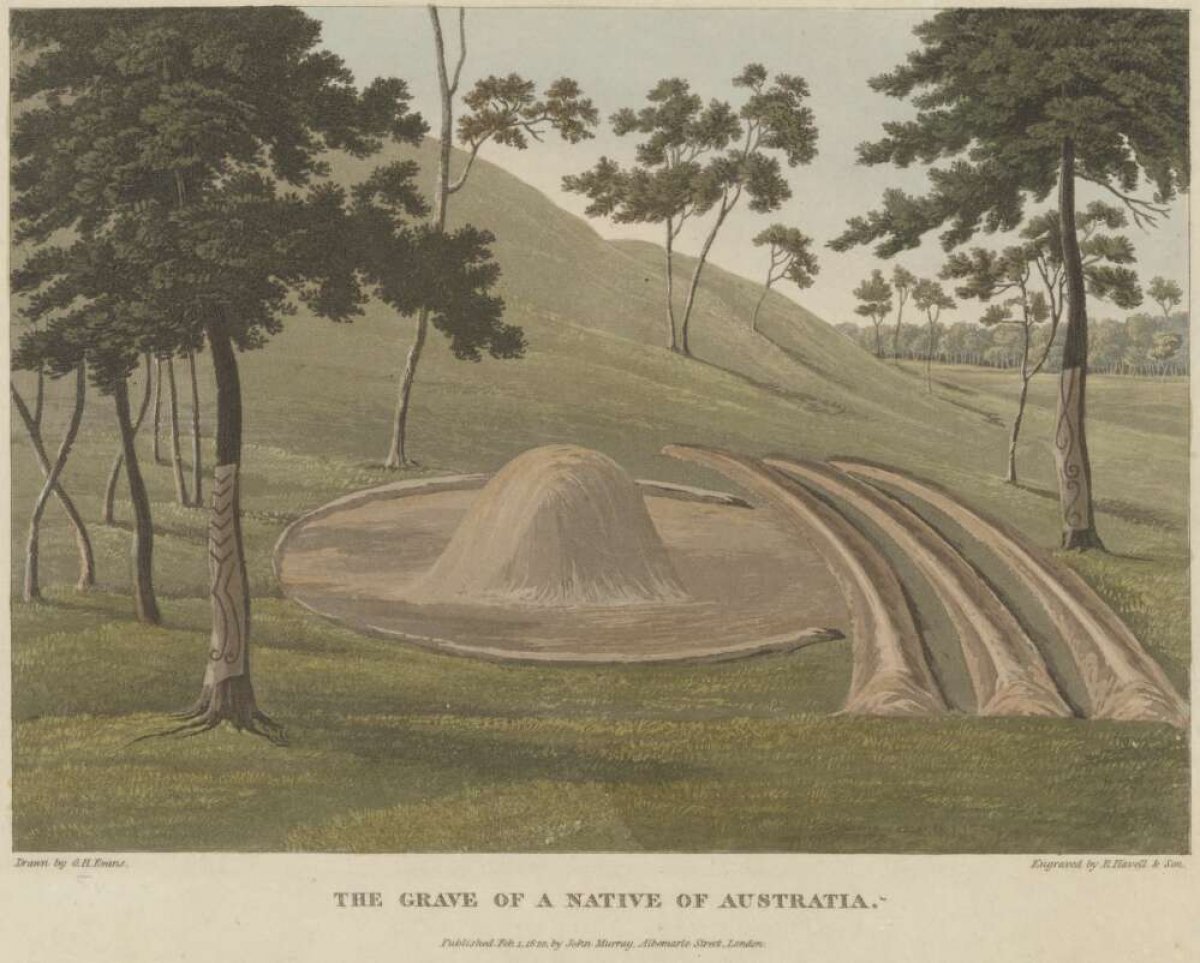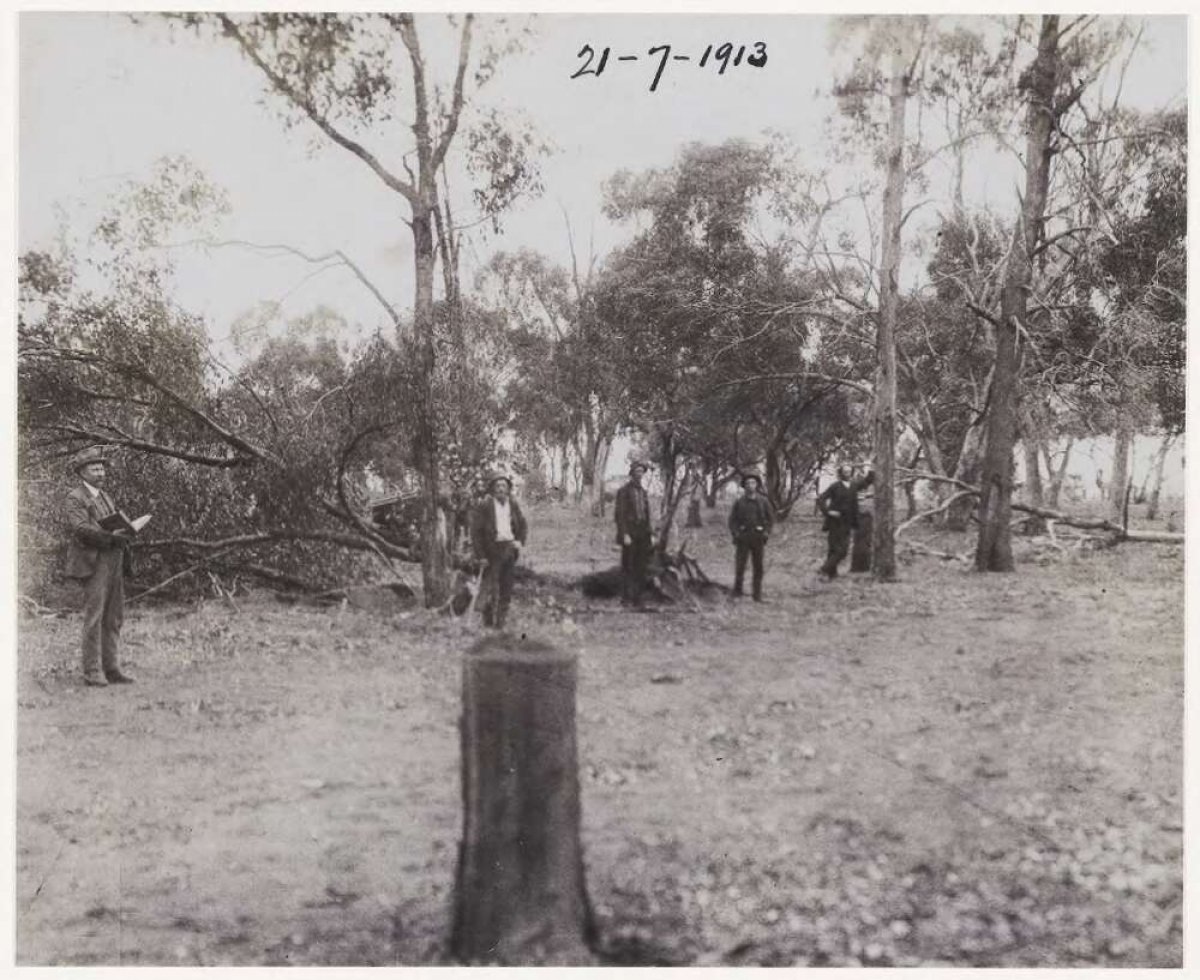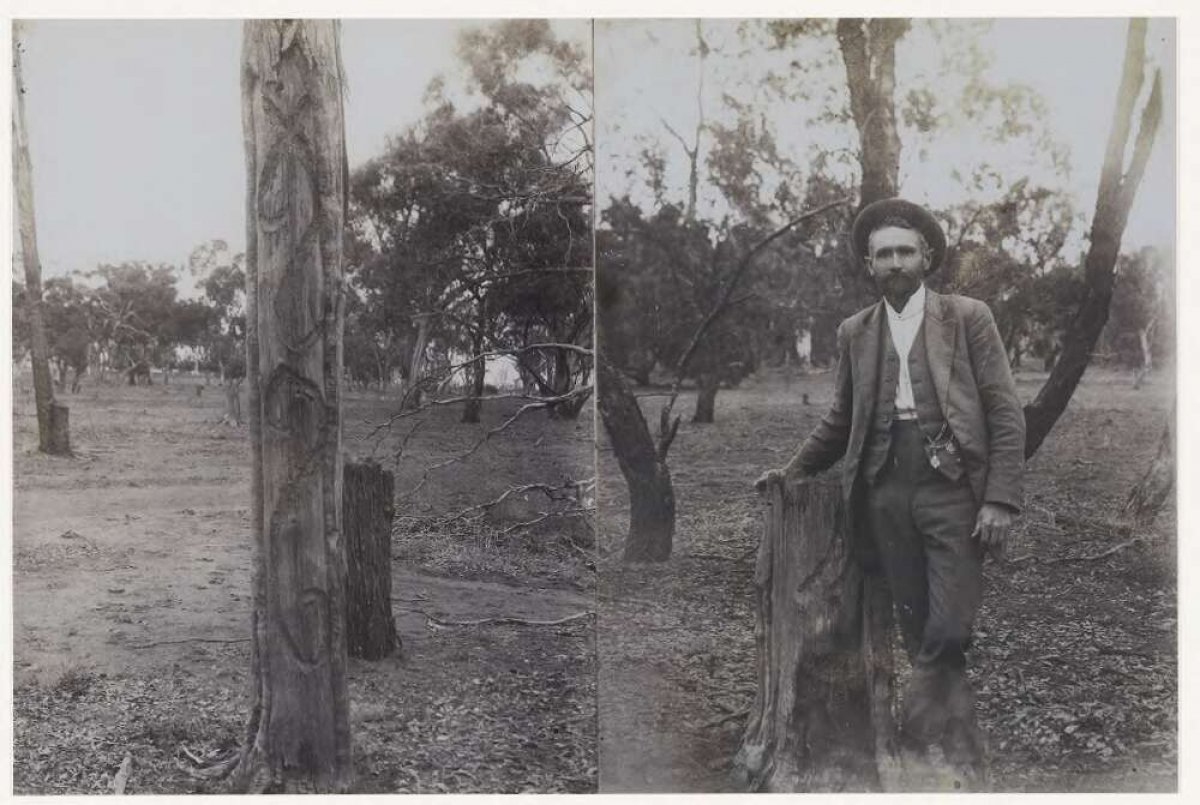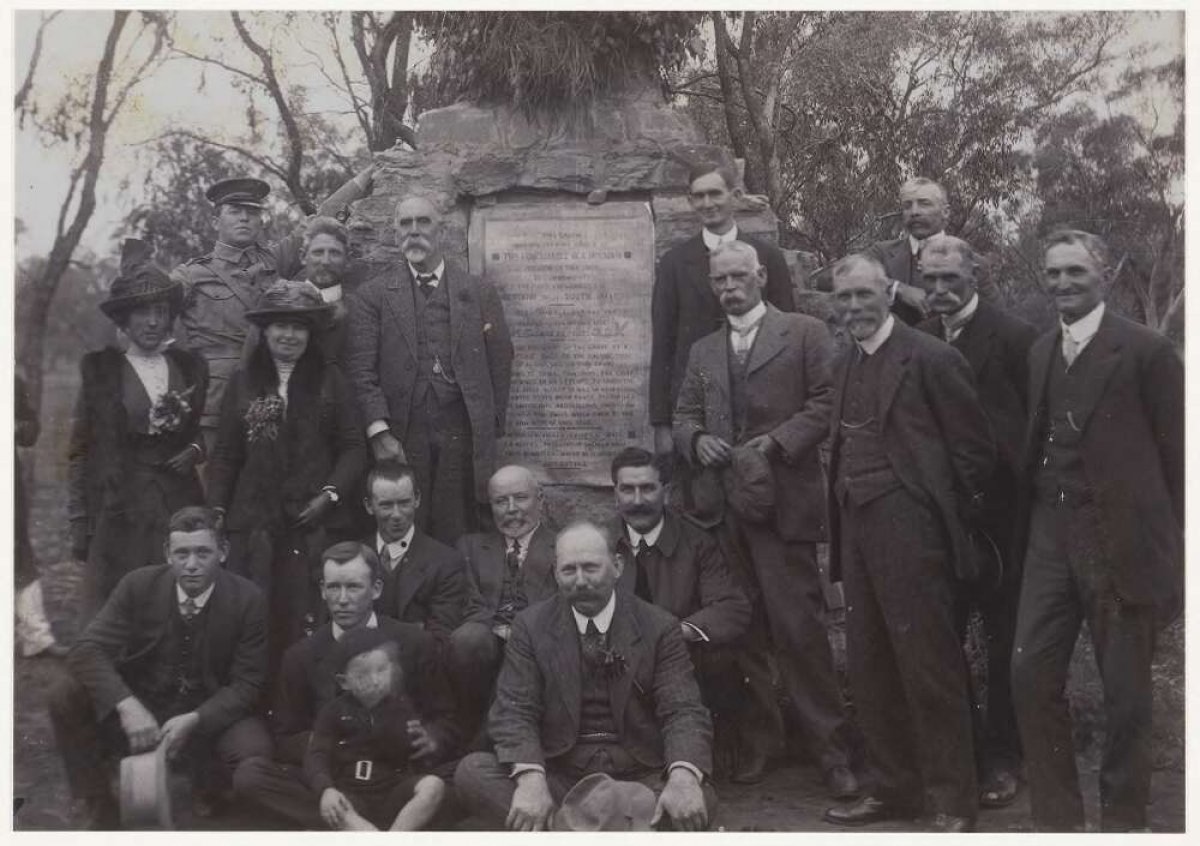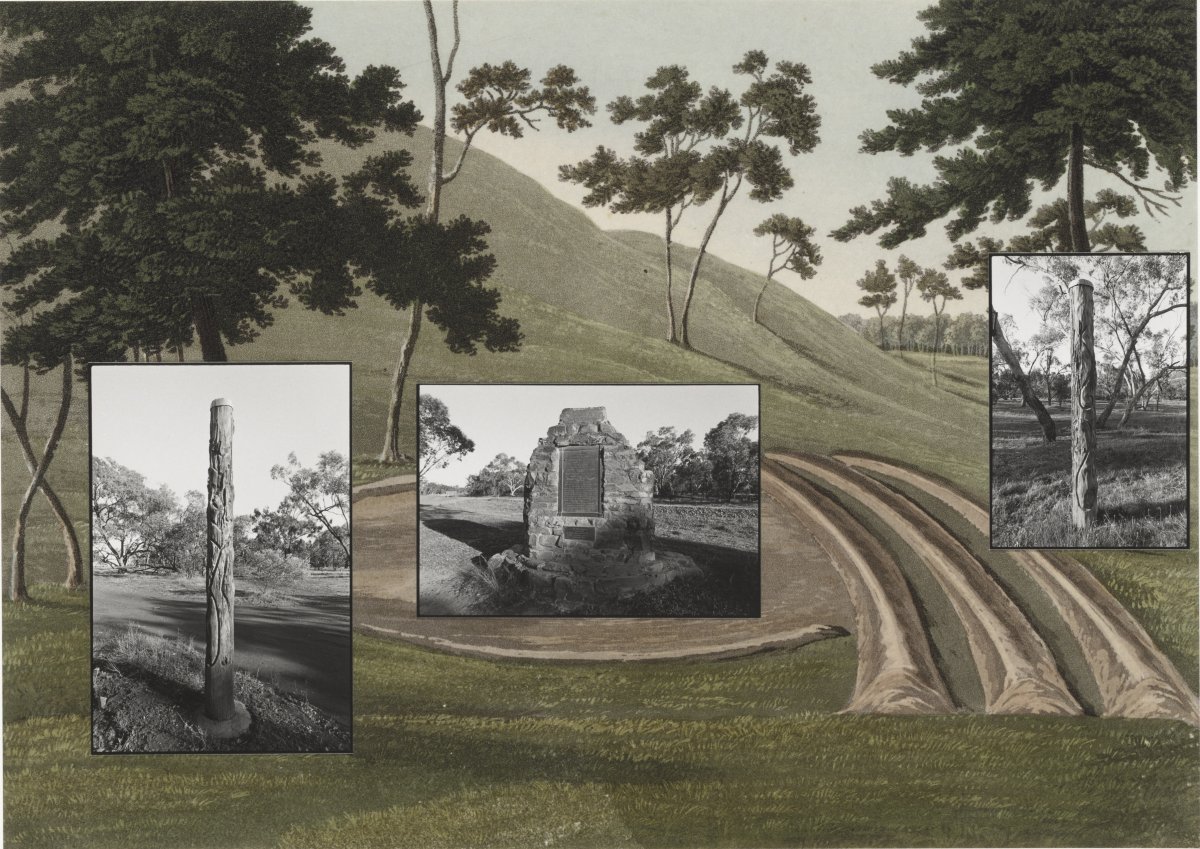These items in our Pictures Collection show evidence of the ceremonial and religious, as well as everyday activities of Aboriginal people. The collection contains examples of surviving physical reminders of Aboriginal occupation in south-eastern Australia, where the impact of European settlement has been the longest and most intense.
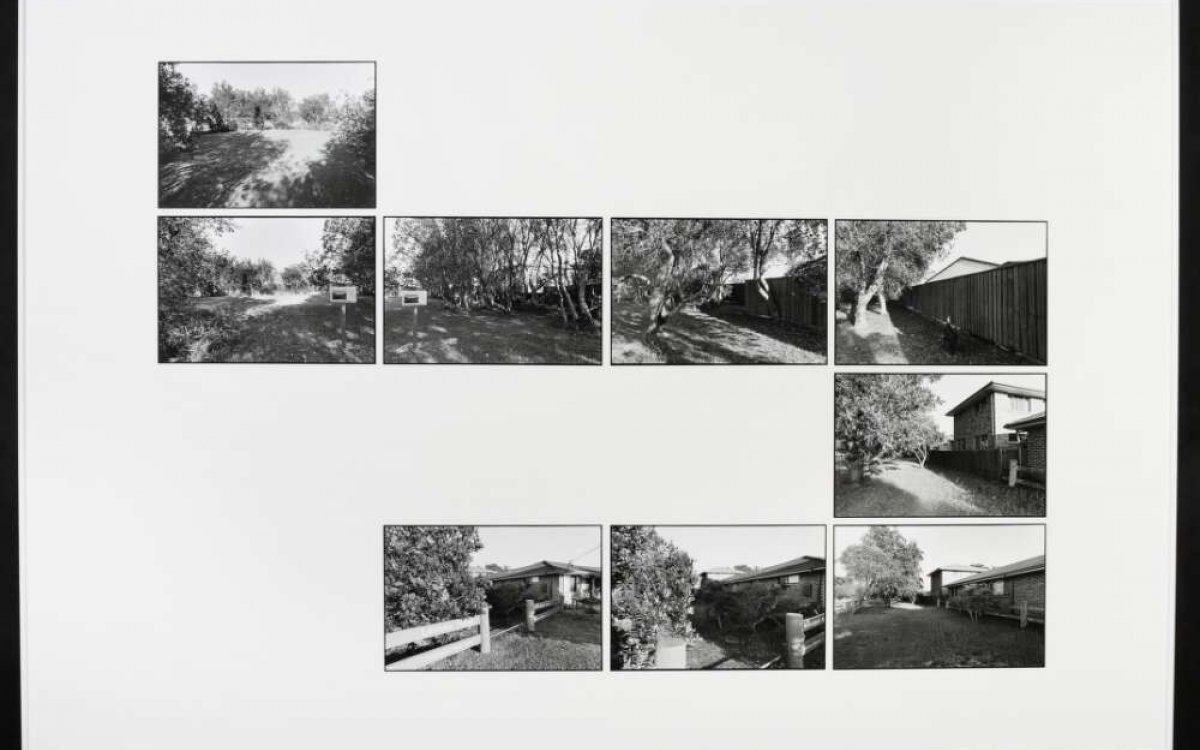
Rhodes, Jon, 1947-. (2004). Suburban Bora, Bundjalung, Lennox Head, New South Wales, 2004 [picture] / Jon Rhodes. http://nla.gov.au/nla.obj-147626662
Bora rings
Bora rings constitute a unique cultural resource, being the one of few material manifestations of the ceremonial and religious life of Aboriginal people. Found mainly in south-eastern Australia, they are circles of foot-hardened earth surrounded by raised embankments. They were generally constructed in pairs (although some sites have three), with a bigger circle about 22 metres in diameter and a smaller one of about 14 metres. The rings are joined by a sacred walkway. A bora or initiation ceremony would take place here in which young boys were introduced to the traditional knowledge of the men.
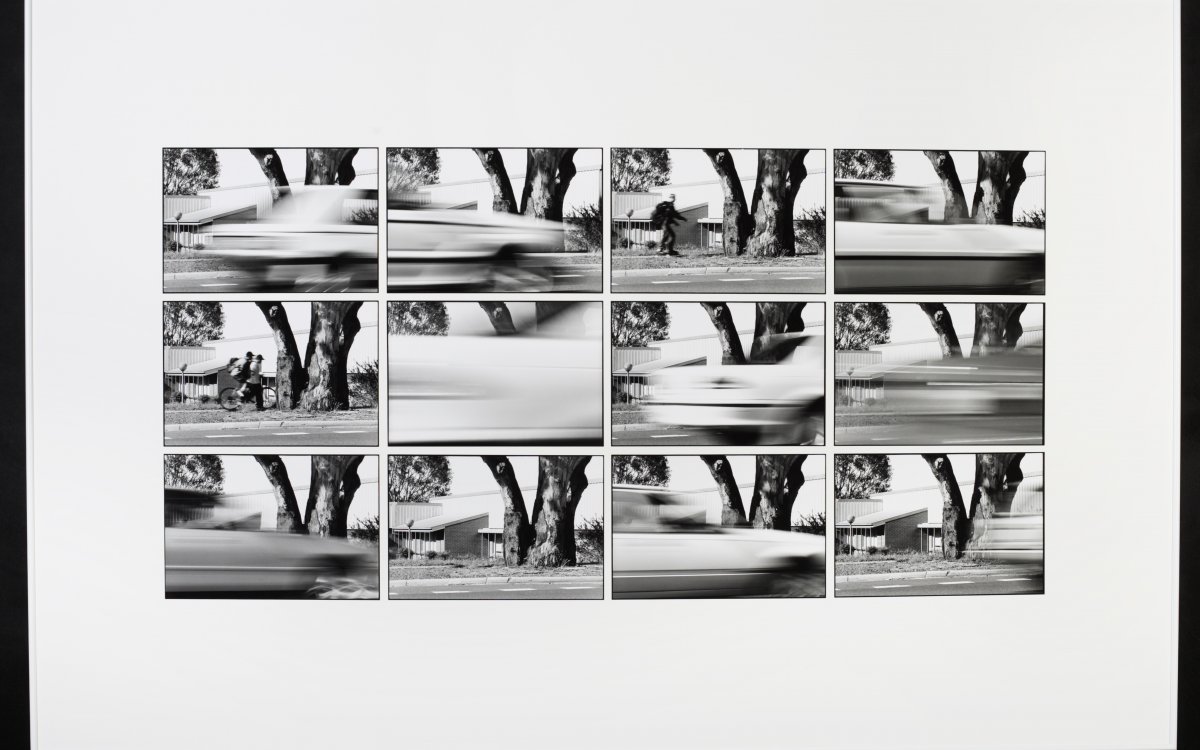
Rhodes, Jon, 1947-. (1998). Cars and scars, Ngambri, Wanniassa, Australian Capital Territory, 1998 [picture] / Jon Rhodes. http://nla.gov.au/nla.obj-147625762
Scarred trees
Scarred trees (also called canoe or shield trees) were produced as a result of bark being taken from the trees to form canoes, shields, coolamons and shelter. The bark was usually elliptical in shape allowing for easy remodelling. The process exposed the heartwood. The bark at the edges of the scar usually healed, leaving the heartwood exposed and forming a scar. Sometimes the axe marks made by Aboriginal people are still visible, but usually the marks will be hidden because the bark has grown back. Sometimes, if the scar is very old, it will be completely covered by regrowth. Aboriginal people also cut toe holds in trees to make them easier to climb. This allowed them to use trees as lookouts, hunt for possums or bee hives, and cut bark higher up.
While scarring of trees can also occur naturally due to lightning strikes and disease, there are still a few surviving examples of Aboriginal created scar trees mostly in south-eastern Australia.
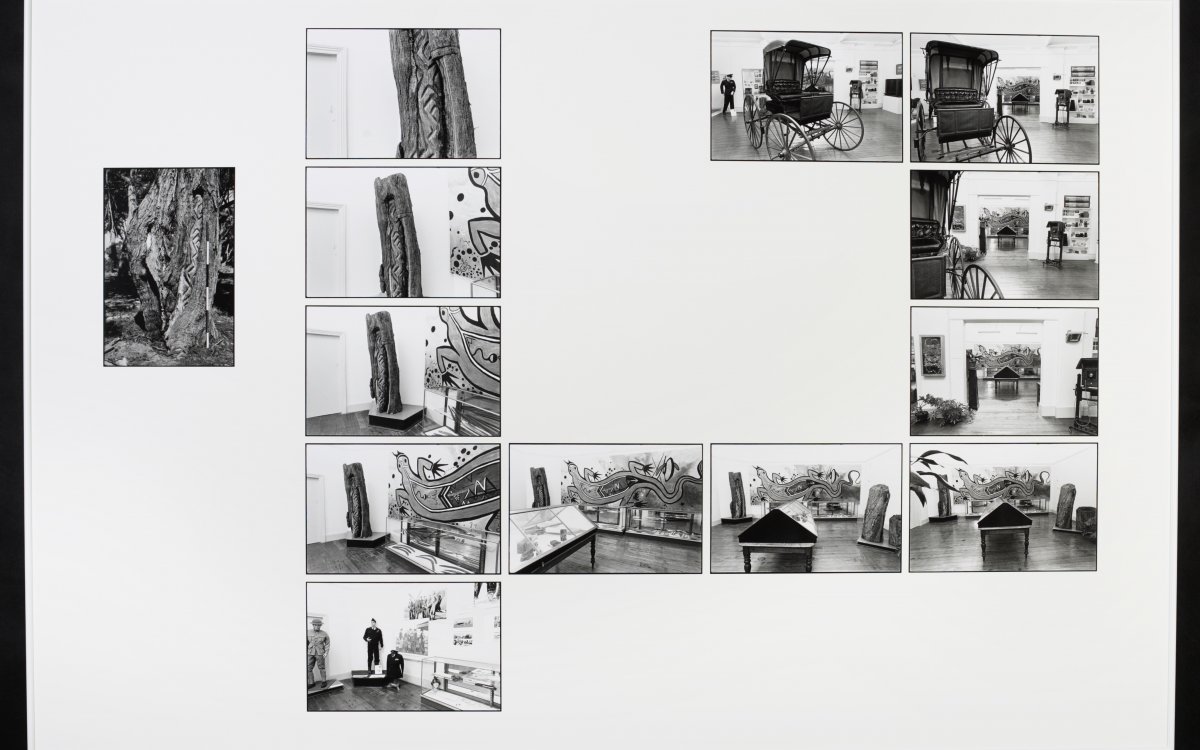
Webster, William & Rhodes, Jon, 1947-. (1962). Boorolong carved trees, Anaiwan and Nganyaywana, Armidale and Boorolong, New South Wales, 1962-2002 [picture] / Jon Rhodes and William Webster. http://nla.gov.au/nla.obj-147623265
Carved trees
Distinct from scarred trees, carved trees are a form of visual communication. They mark sites of significance to Aboriginal people such as initiation or burial sites. For burial sites, the trees usually marked the grave of an important man.
Tree carvings can be found dotted throughout Australia, but are mainly of New South Wales origin—specifically the work of Gamilaroi and Wiradjuri artists.
More than 7500 Aboriginal-modified tree sites have been recorded in New South Wales, but fewer than 100 carved trees remain standing in their original location. The rest have been removed for farming and forestry.
Activities
‘King’s’ Grave and Oxley Monument
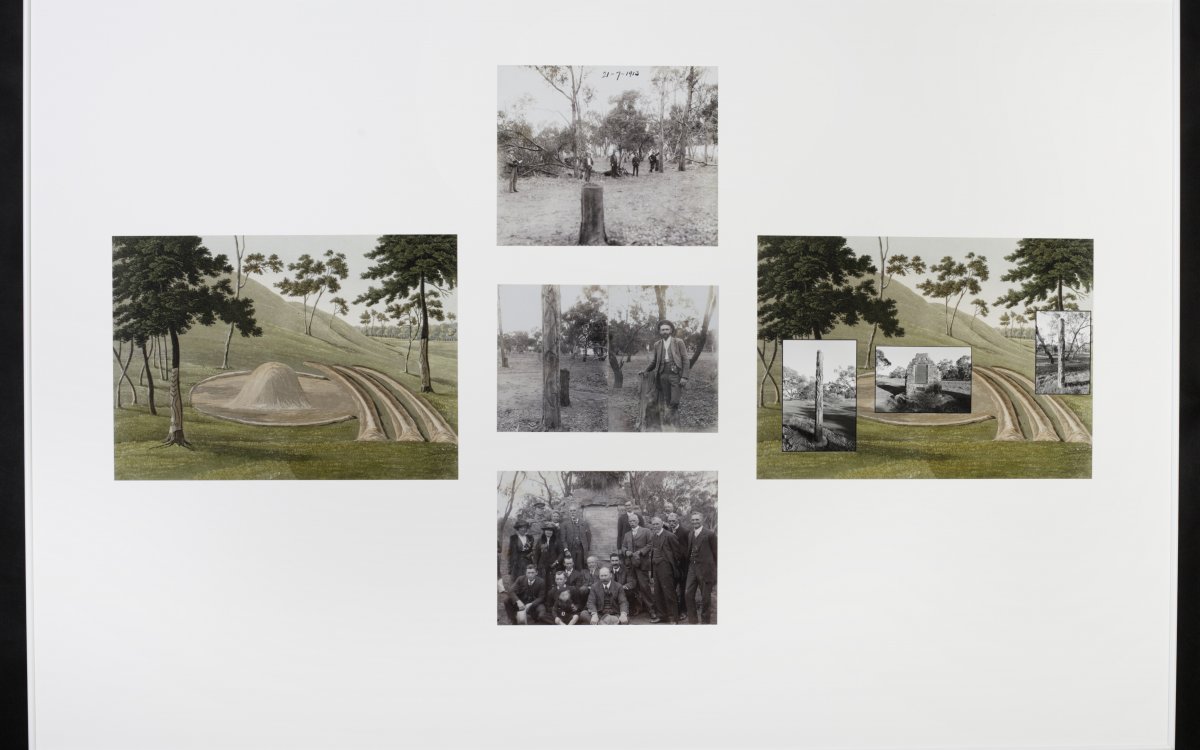
Rhodes, Jon, 1947-. (2006). King's Grave, Wiradjuri, Goobothery Hill, New South Wales, 2006 [picture] / Jon Rhodes. http://nla.gov.au/nla.obj-147621567
Show students this image created by Jon Rhodes in 2006. There are quite a few images put together to make the composition. Rhodes’ image tells the story of a place of importance to Aboriginal culture that also marks European exploration in the early twentieth century. This place is now known as Goobothery Hill, and is about 15 minutes’ drive outside the New South Wales town of Condoblin.
A sign there tells some of the story. The text reads:
King’s grave (Goobothery Hill) Aboriginal place
On 29 July 1817, John Oxley, Explorer and Surveyor-General reached this spot. He recorded the site in his journal as the burial of the local “King” of the Calare Tribe who had been drowned while trying to cross the flooded Lachlan River. Oxley described the grave as a mound surrounded by two cypress pine trees marked with “Aborglyphs” (carvings).
According to oral history, the man drowned when attempting to save a mob of people whilst the river was in high flood.
The carved posts that are present at the site today bear exact facsimiles of the original carvings which were on the two Cyprus pine trees which grew where these posts now stand. One of the original carved trees was removed and remains at the Australian Museum in Sydney and the other has long been lost.
The site is of considerable historical and cultural importance to the Condobolin and Murrin Bridge Aboriginal Communities.
The site is also important, being one of the campsites of John Oxley and G. Evans, Assistant Surveyor. In 1914 a stone cairn was erected to commemorate this event.
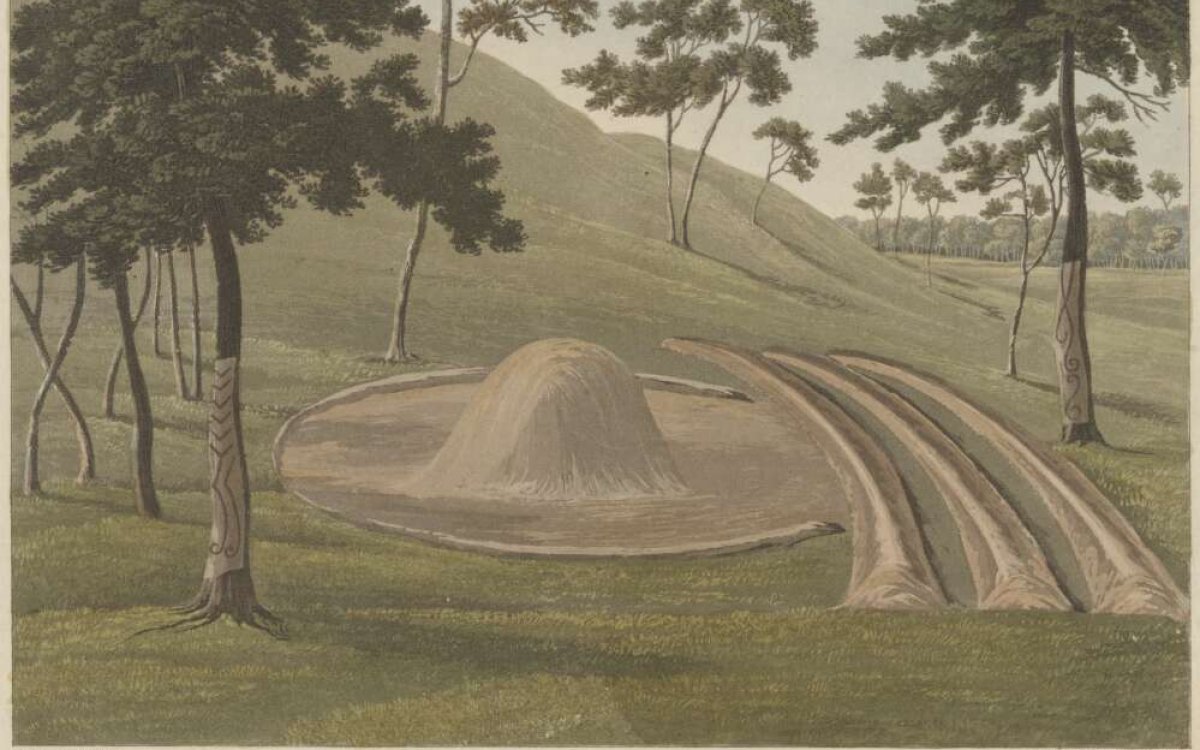
R. Havell & Son & Evans, George William, 1780-1852 & Oxley, John, 1783-1828. Journals of two expeditions into the interior of New South Wales. (1820). The grave of a native of Australia [picture] / drawn by G.H. [i.e. G.W.] Evans; engraved by R. Havell & Son. http://nla.gov.au/nla.obj-135903737
Explore the history of this place in detail with students using the images and the following questions.
- Who was John Oxley?
- Who was George Evans?
- Why do you think Evans drew the picture which was later made into this print?
- What did they do while they were there?
- Do you agree with their actions?
- Would this type of thing happen today? Why/why not?
- Where else did Oxley and Evans explore on their 1817 expedition?
- How much can you find out about the person whose grave this is?
- What can you find out about Aboriginal burial customs in this part of Australia? Refer students to the burial of Yuranigh, covered later in this resource.
- Goobothery Hill is in the Country of the Wiradjuri people. What are some of the local language words associated with landscapes and landforms in this area?
Almost 100 years after Evans and Oxley travelled through the area, another expedition, led by Edmund Milne visited the site.
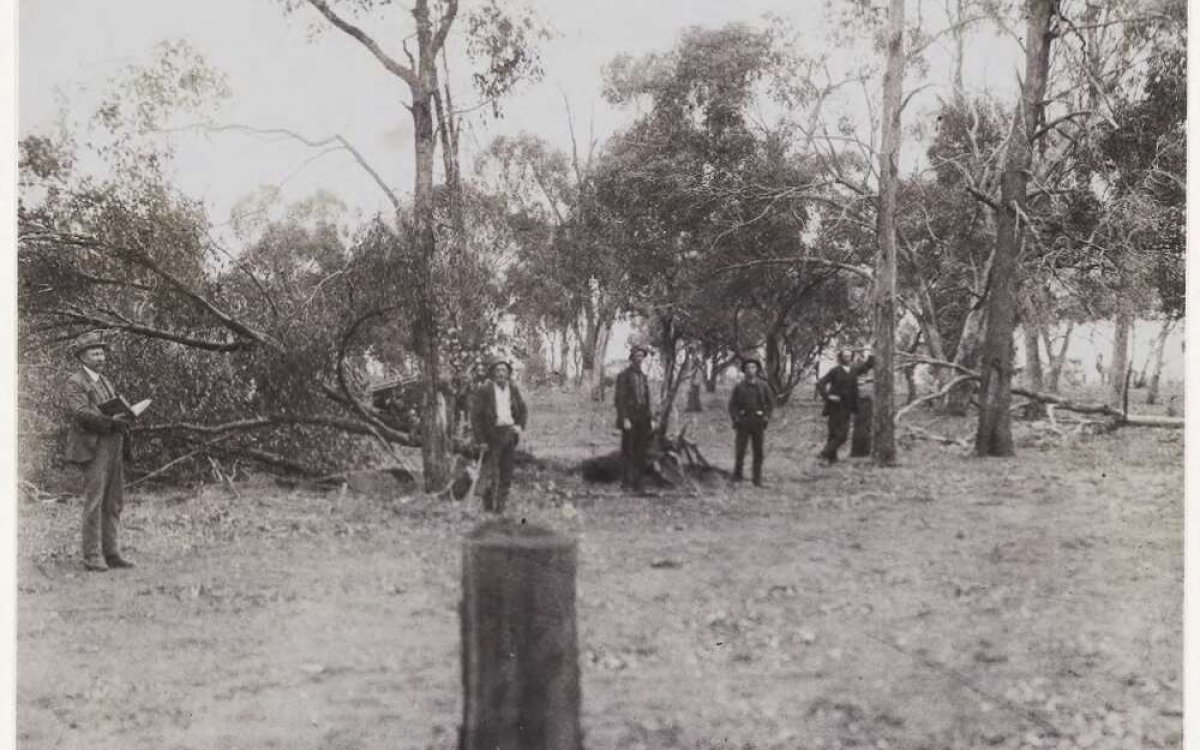
Milne, Edmund, (1861-1917) & Rhodes, Jon, 1947-. (1913). Milne party at the site of the burial mound, Goobothery Hill, New South Wales, 21 July 1913 [picture] / Edmund Milne. http://nla.gov.au/nla.obj-147627817
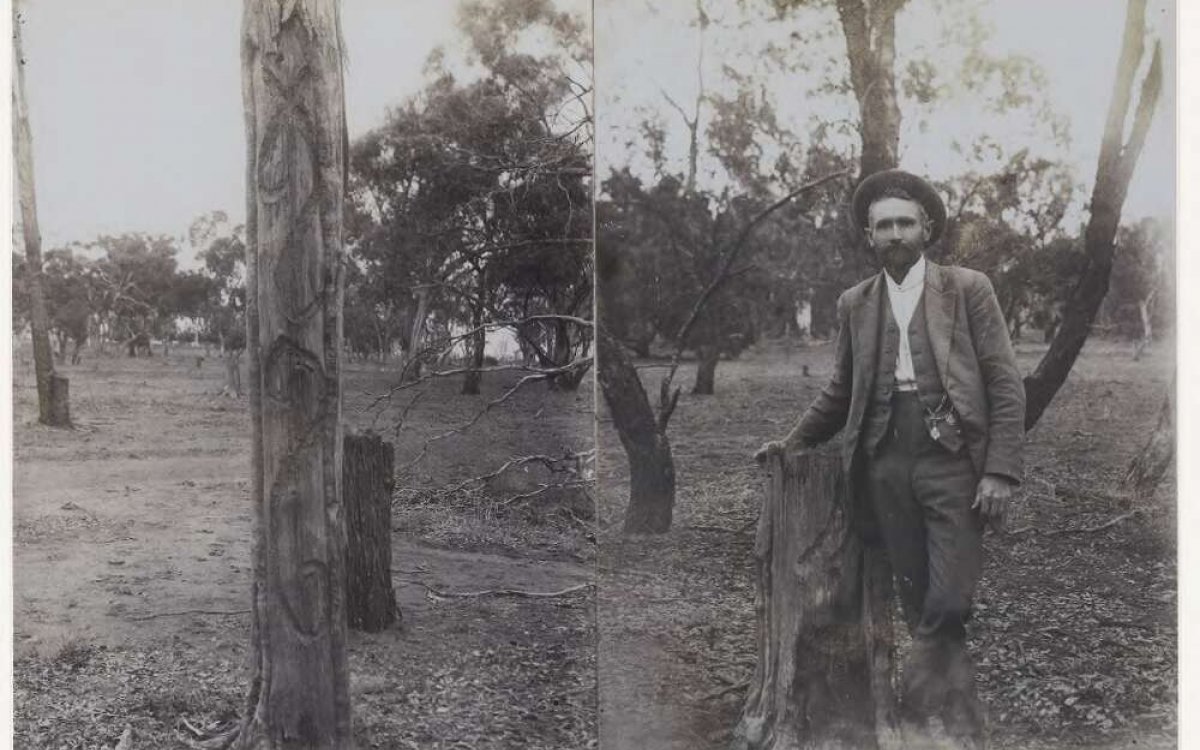
Rhodes, Jon, 1947-. (1913). Edmund Milne [?] standing next to the carved trees, Goobothery Hill, New South Wales, 21 July 1913 [picture]. http://nla.gov.au/nla.obj-147628060
- Who was Edmund Milne?
- Why do you think he might have visited this site?
- What did he do while he was there?
- Do you agree with his actions?
- Would this type of thing happen today? Why/why not?
Use Trove to locate articles about Milne’s visit. You could start with this item:
- OXLEY'S CAMP (1913, November 7) The Sydney Morning Herald (NSW : 1842 - 1954), p. 9.
In 1914 a stone monument to Oxley and Evans was erected on the site. Edmund Milne returned and took this photograph while he was there.
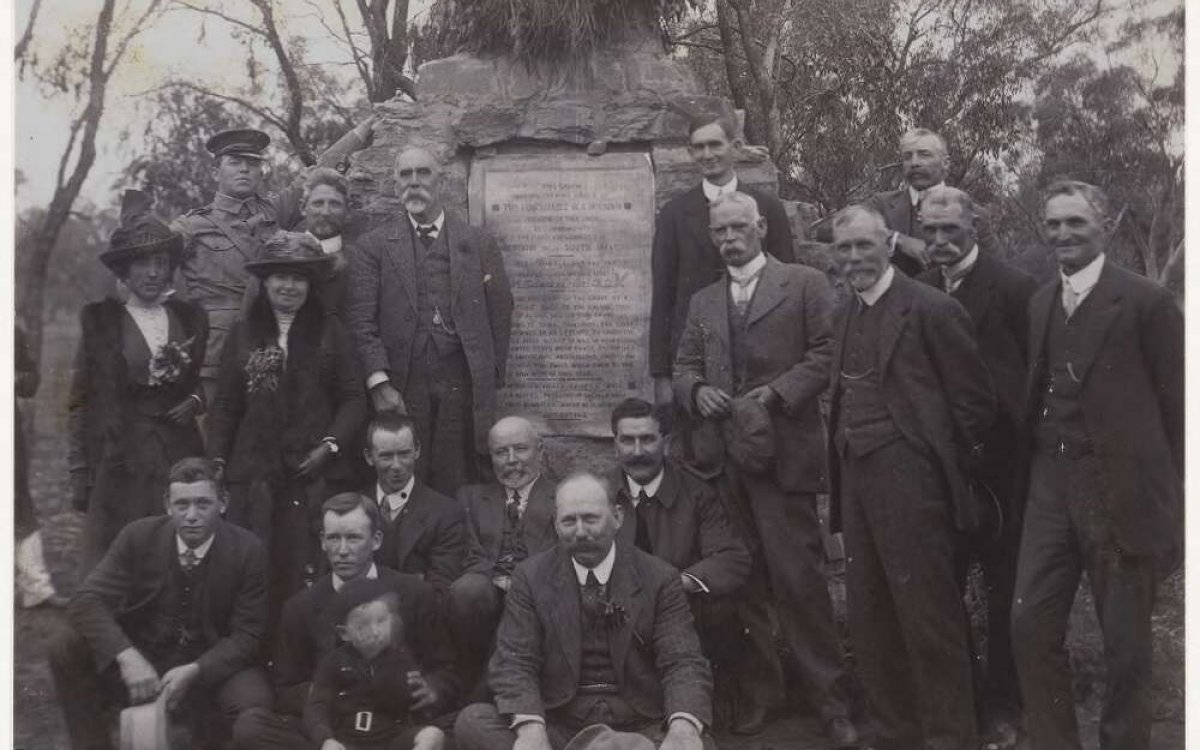
Milne, Edmund, (1861-1917) & Rhodes, Jon, 1947-. (1914). Group of men gathered around the John Oxley expedition monument, Goobothery Hill, New South Wales, ca. 1914 [picture] / Edmund Milne. http://nla.gov.au/nla.obj-147628212
- What is going on in this image?
- Who do you think the people are?
- Why do you think they are there?
- Find out what the inscription on the monument says. Do you think it would be written differently today? What words would change?
In 2006, Jon Rhodes visited Goobothery Hill, and took the photographs he used to create this composite image.
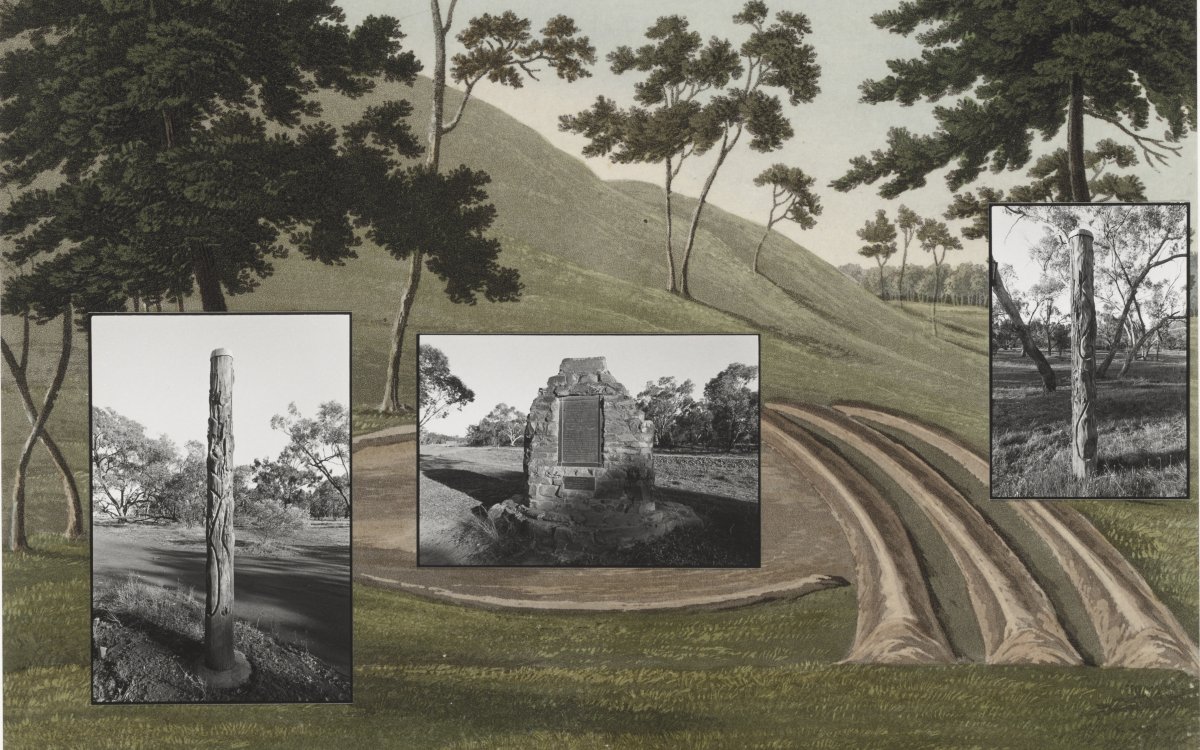
Rhodes, Jon, 1947-. (2006). Oxley expedition monument and replica carved trees, Goobothery Hill, New South Wales, 2006 [picture] / Jon Rhodes. http://nla.gov.au/nla.obj-147628363
- What point do you think Rhodes is trying to make with this image composition? Support your answer with evidence either from the image itself, or from other sources.
- Have students summarise the spiritual, aesthetic and cultural value of Goobothery Hill for the Wiradjuri people. It is listed on the New South Wales Heritage Register as an Aboriginal Place with the title ‘King’s Grave’. Students may like to use the statement of significance prepared for this place as one of their sources.
